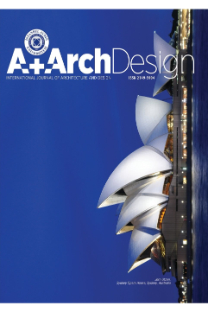Sürdürülebilir Geçici Mimari
Bu araştırma afet sonrasında kullanılacak barınakların tasarımı ve bu barınakların sürdürülebilirlik ilkelerine uygun şekilde tasarlanmasının yollarını araştırmaktadır. Öncelikle, geçici mimari tasarım konsepti tanımlanmış, daha sonra olağanüstü durum aşamaları açıklanarak sürdürülebilir mimari prensipleri değerlendirilmiştir. Böylelikle barınakların uygulanabilirlik ilkeleri gösterilmiş ve dayanak olarak barınaklarda uygulama tekniklerini değerlendirmek için kullanılmıştır. Bu uygulama teknikleri üç sınıfta (çadırlar, prefabrik barınaklar ve kerpiç barınaklar) irdelenmiştir. Son olarak genel değerlendirmeler ve analizler ortaya konulmuştur ve her sınıf nasıl en kullanışlı şekilde kullanabileceği anlatılmıştır.
Anahtar Kelimeler:
Afet, barınak, mesken, sürdürülebilirlik
Sustainable Temporary Architecture
This research concerns about the shelter designing in post disaster cases and its ability to apply the sustainability principles. First, temporary architecture design has defined, then by defining the post disaster steps, the principles of sustainable architecture is explained. Thus the applicability of the principles of the shelter has been shown and has been used as basis for evaluating the application techniques in shelters. These techniques was classified into three classes: tents, prefabricated shelter and earth buildings. Finally, a general conclusion of the research and its assessment was done, and it explains how the most convenient for using each class.
Keywords:
Disaster, shelter, dwelling, sustainability,
___
- [1] Amaratunga, D., Haigh, R. 2011. Post-Disaster Reconstruction of the Built Environment: Rebuilding for Resilience, Wiley-Blackwell
- [2] S. Acerer, 1999. Afet Konutları Sorunu ve Deprem Örneğinde İncelenmesi, Istanbul: ITU
- [3] WCED, 1987. Our Common Future. World Commission on Environment and Development, Oxford University Press, Oxford.
- [4] D. Oktay, 2002. Sürdürülebilirlik Bağlamında Planlama ve Tasarım, Mimar-ist
- [5] Y. Zhang, A, 2012. Comprehensive Method for the Selection of Sustainable Materials for Building Construction, the Faculty of Worcester Polytechnic Institute
- [6] Mora E.P., 2007. “Life Cycle, Sustainability and the Transcendent Quality of Building Materials”, pp. 1329-1334.
- [7] H. S. Tomkiewicz, 2011. Barriers to Implementation of Sustainable Construction Practices in the Homebuilding Industry: A Case Study of Rochester, University of Nebraska-Lincoln.
- [8] S. K. Ting, 2006. Optimization of Embodied Energy in Domestic Construction, School of Civil and Chemical Engineering. RMIT University.
- [9] C. Joustra, 2010. An Integrated Building Water Management Model for Green Building, University of South Florida.
- [10] N. O. Melin, 2004. Application of Bennett Mechanisms to Long-Span Shelters, the University of Oxford.
- [11] Available at http://www.abeerseikaly.com/weavinghome.php
- [12] F. Axelsson, 2012. The Emergency Housing Project, Chalmers University Of Technology.
- [13] Erkelens, P. A., Akkerman, M.S.K., Cox, M.G.D.M., Egmond- de Wilde De Ligny, van E.L.C., Haas, de, T.C.A. & Brouwer, E.R.P., 2010. Innovative shelter for disasters. Proceedings CIB world congress, pp. 97-110. Manchester: CIB
- [14] Available at http://www.aksalser.com
- [15] M. Estrada, 2013. A case study of cob earth based building technique in Matagalpa, Nicaragua – LCA perspective and rate of adoption, Mid Sweden University.
- [16] Davidson, C., Lizarralde, G., Johnson, C., 2008. Myths and Realities of Prefabrication for PostDisaster Reconstruction. 4th International i-Rec Conference 2008 - Building resilience: achieving effective post-disaster reconstruction. Christchurch, New Zealand.
- [17] Available at http://www.solidsmack.com
- [18] Available at http://www.pinterest.com
- [19] S. Velamati, 2012. Feasibiliy, Benefits and challenges of Modular Construction in High Rise Development in the United States: A Developers's Perspective, University of Pennsylvania.
- ISSN: 2149-5904
- Başlangıç: 2015
- Yayıncı: İstanbul Aydın Üniversitesi
